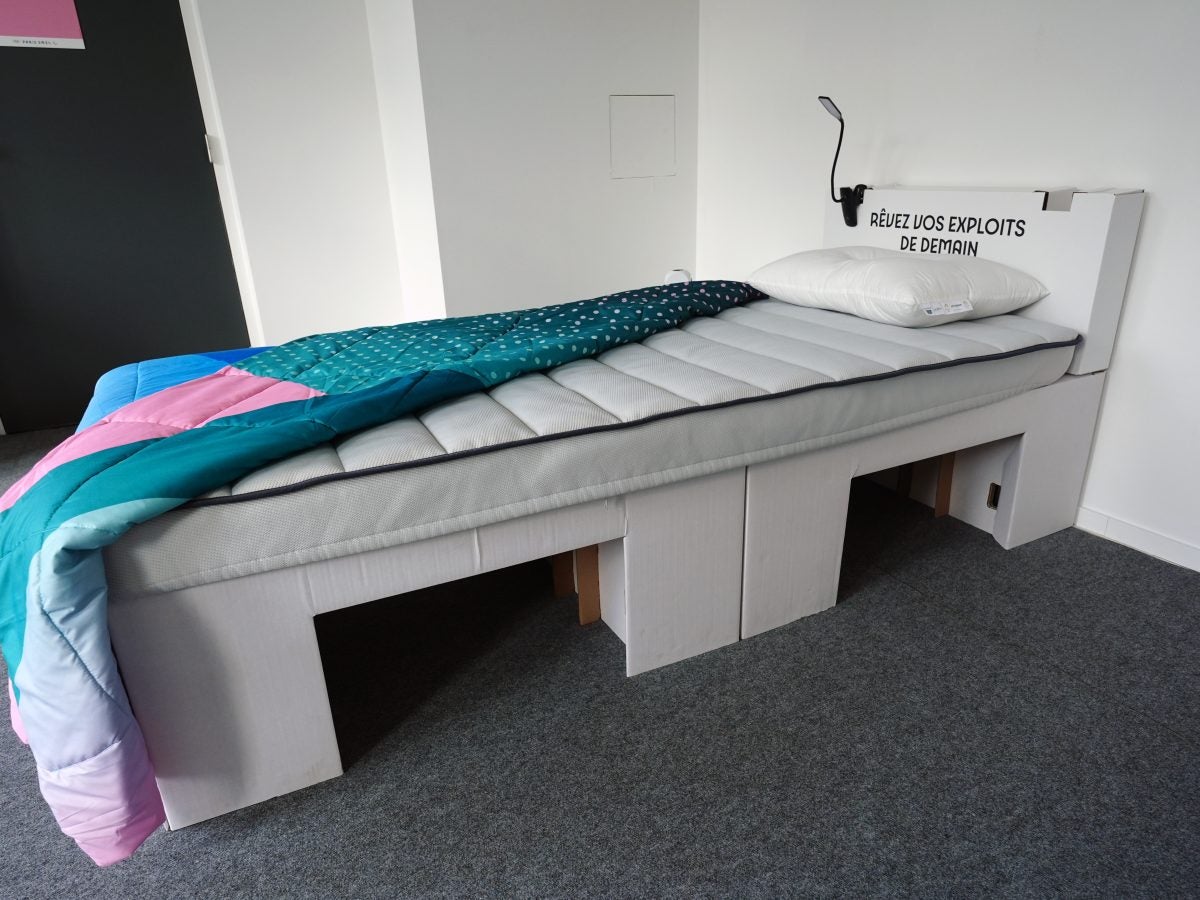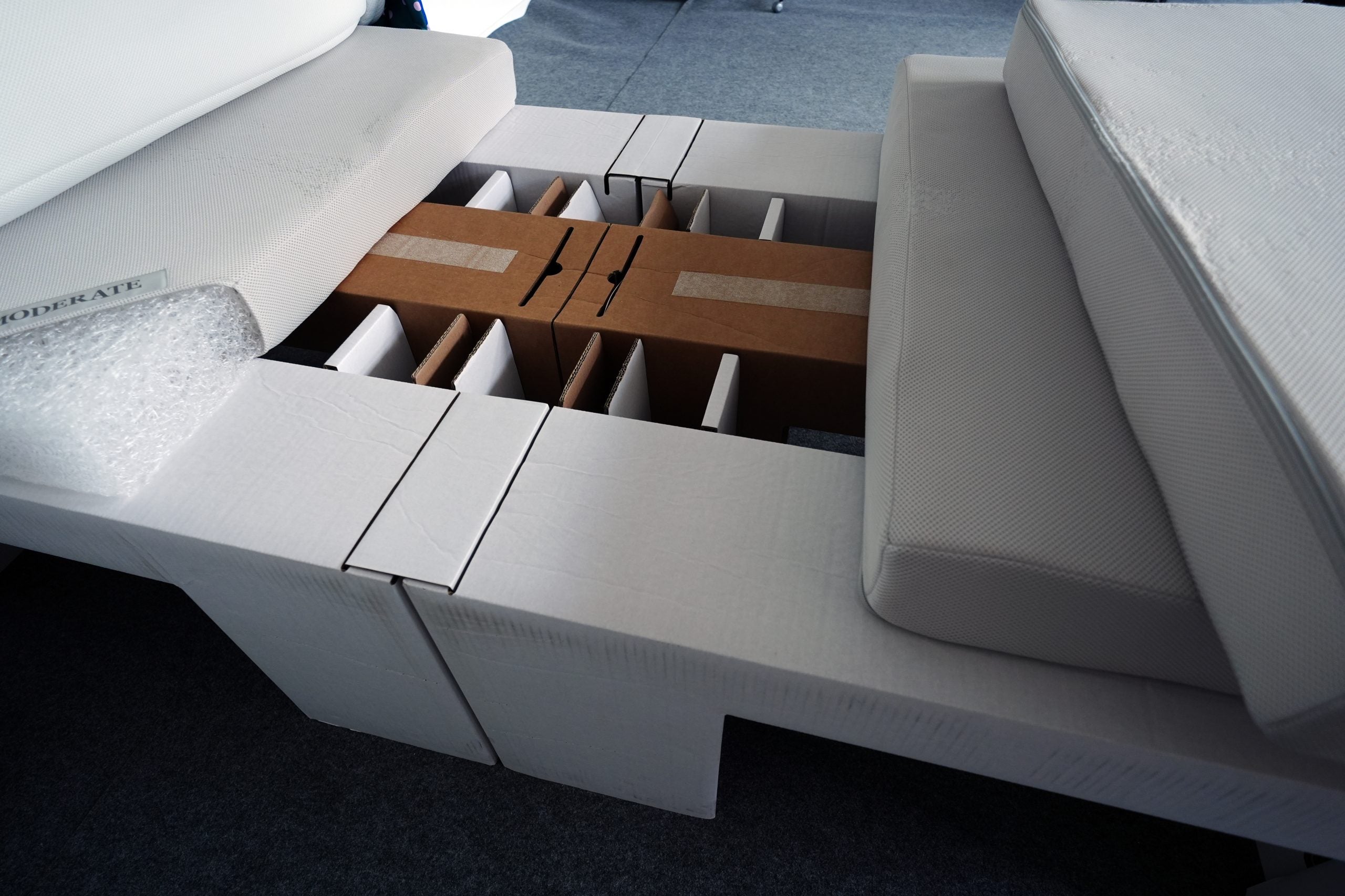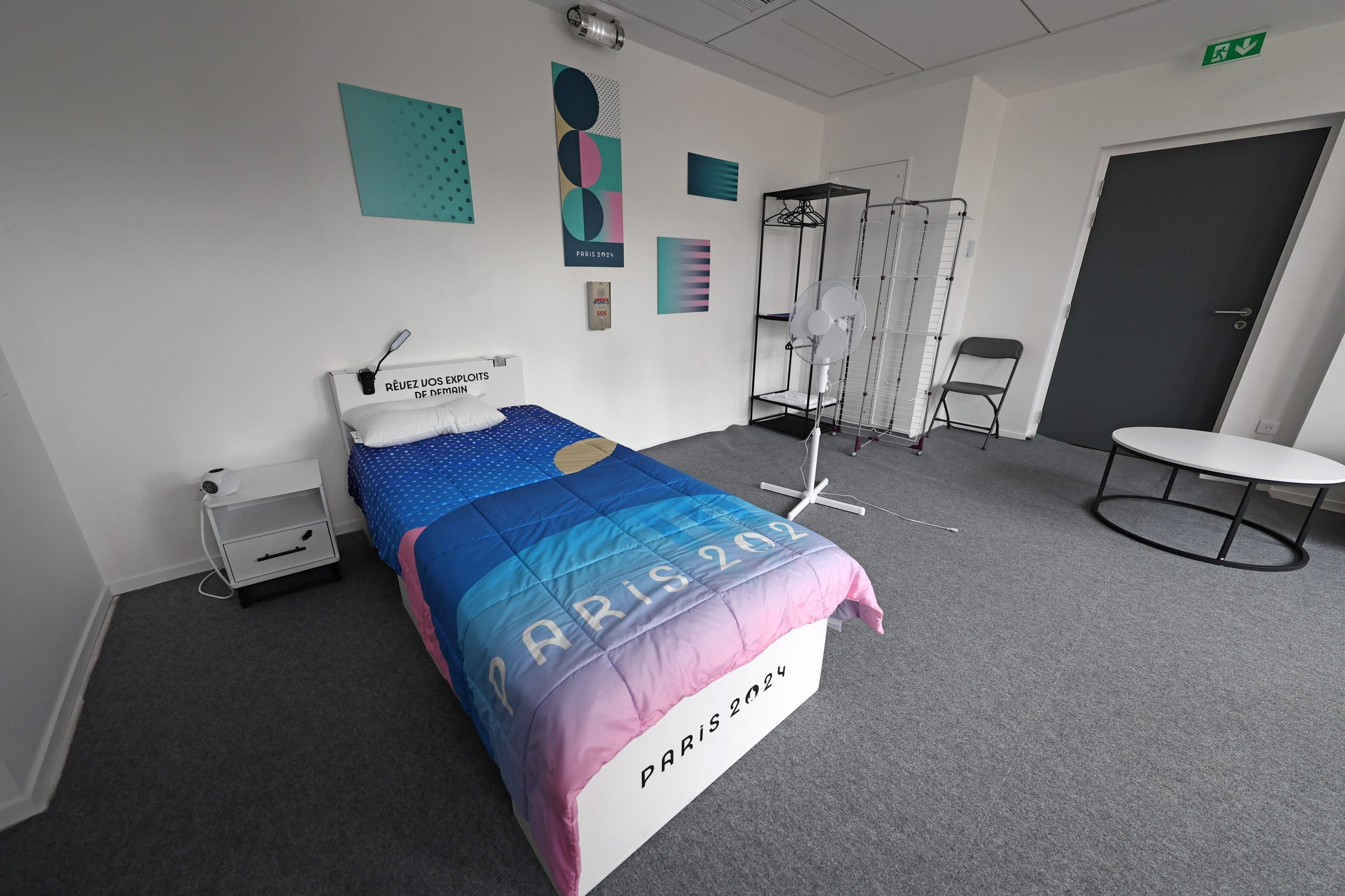
We’re several days into the 2024 Summer Olympics in Paris, France. Still, we’ve already witnessed amazing competition wins, like Simone Biles leading the USA Gymnastics team to victory by nabbing a gold medal. Biles took gold in all-around, becoming the first American gymnast to win twice. But despite the inspiring victories, there’s been chatter about how our favorite Olympian champions are preparing for their competitions back at the Olympic Village, where there are cardboard beds.
The Olympic Village is 4.3 miles north of central Paris, spread between the suburbs of Saint-Denis, Saint-Denis, and Saint-Ouen-sur-Seine. It is designed to accommodate 14,000 competitors for just over two weeks. While there are on-site grocery and laundry facilities, there aren’t any blackout curtains or comfortable beds, hence the controversy with the cardboard beds offered to the most elite athletes in the world. Coco Gauff, a renowned tennis player, was one of the first players to bring the living conditions within the Olympic Village to light with a TikTok video that later went viral.
Her footage showcased a cramped apartment filled with several athletes trying to prepare for the day, with pop-up hair stations, cardboard beds, and clothes everywhere, including their boat trip down the Seine River. The video’s caption read, “10 girls, two bathrooms. #olympicvillage.”
After uploading the video, Gauff decided to stay at a nearby hotel instead of the Olympic Village. We can only hope that the hotel is more comfortable for her. As you can imagine, sleeping environments, including beds, are important in achieving quality rest. Dr. Faith Pérez McGowan, a licensed psychologist and sleep expert, agrees. “The bedroom environment, including the mattress, is very important for sleep,” she states. McGowan continues, “While a poor mattress could influence performance, Olympic athletes have likely trained their bodies to perform in several different settings. If possible, I would recommend they bring their bedding or a mattress topper to improve the softness of the mattress. Using their sheets/pillow could also provide comfort and familiarity with their typical sleep environment.”

Some Olympians have invested in their mattress toppers. However, we’re still wondering if it’s made a difference. Dr. Angela Holliday-Bell, a board-certified physician, certified sleep specialist, speaker, and founder of The Solution Is Sleep LLC, suggests that cardboard beds aren’t ideal despite adding additional padding. “Good quality sleep improves speed, accuracy, muscular strength, and endurance while sleep deprivation leads to impaired thinking, slowed reaction time, decreased focus, and diminished attention, all needed to perform and compete at an optimal level. Sleeping on cardboard mattresses can impact sleep quality, leading to downstream effects. For optimal athletic performance, it’s essential to have an adequate sleep environment that supports quality sleep, including a comfortable and supportive mattress and a dark, quiet, and cool room,” she shares.

However, Dr. Funke Brown, a triple-board-certified sleep medicine physician, has a different perspective on cardboard beds. “The use of cardboard beds for Olympic athletes is an interesting development. A good sleep environment includes an optimal sleep surface and can impact sleep quality. While cardboard beds may seem unusual, their impact on sleep and performance will be based on how they are designed and constructed,” she says.
She believes that Olympians who focus on healthy sleep habits will maximize their performance.
Here are a few things to consider regarding cardboard beds, according to Dr. Brown:
What is the support and comfort like? While a firm sleeping surface is generally preferred, a cardboard box may affect spinal alignment and pressure points. If the cardboard beds are well-designed and provide adequate support, they are unlikely to hinder performance significantly. In a situation where the firm surfaces are uncomfortable, a mattress topper could help.
How durable and stable are they? The beds should be able to withstand the weight and movements of athletes. If there is not adequate reinforcement, it could become an issue.
What is the psychological impact? Sleeping in a new environment and an unconventional bed surface might cause some initial anxiety or discomfort for athletes, potentially affecting their sleep in the short term.
Are there other environmental factors? Other aspects of the sleeping environment, such as room temperature, noise levels, and light exposure, may significantly impact sleep quality more than the bed material itself.
Here are some of Dr. Funke’s favorite types of mattresses:
Memory foam mattresses conform to the body shape and provide excellent support and pressure relief.
Hybrid mattresses: this is a combination of innerspring and foam layers, which gives both support and comfort.
Latex mattresses: Known for their durability and responsiveness, they combine natural and synthetic. These can be good for athletes who change positions frequently during sleep.
